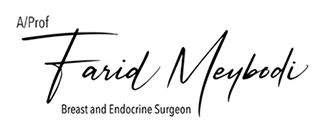Duct Ectasia
What is Duct Ectasia?
Duct Ectasia, or mammary duct Ectasia, is a benign or noncancerous breast condition in which one or more milk ducts (tubes that transfer milk to the nipple) become swollen and blocked. This can cause build-up that leads to an infectious condition called periductal mastitis.
Causes of Duct Ectasia
Duct ectasia is caused by natural breast changes that occur with age. Breasts have milk-producing glands known as lobules and tubes that convey milk to the nipple known as ducts. Fibrous, fatty and glandular tissue surrounds the lobules and ducts to give the breast its distinct shape and density. As women approach menopause and the breast starts to age (age 35 years and on), the ducts under the nipple widen and shorten leading to duct ectasia.
Signs and Symptoms of Duct Ectasia
Some signs and symptoms of duct ectasia include:
- Breast pain and tenderness
- Abnormal nipple discharge
- A lump felt under the nipple
- An inward pulling of the nipple (inverted nipple) as a result of duct shortening
- Swelling, redness and inflammation in the nipple area
- Fever due to associated infection
Diagnosis of Duct Ectasia
Duct Ectasia usually is diagnosed while doing breast imaging for investigations of nipple discharge or breast problems.
Treatment for Duct Ectasia
Most cases of duct ectasia do not require any treatment as it is a normal process of ageing, and symptoms often improve on their own. However, if symptoms persist, your doctor may recommend further measures, including the following:
- Antibiotic medications to treat the underlying infection
- Warm compresses to relieve pain and discomfort
- Surgical removal of the affected duct through a small surgical cut along the outer border of the areola (the darker circular area of skin around the nipple). This procedure is usually performed under anaesthesia as an outpatient (same-day) surgery. The surgery will leave a small scar, but this will fade over time.







